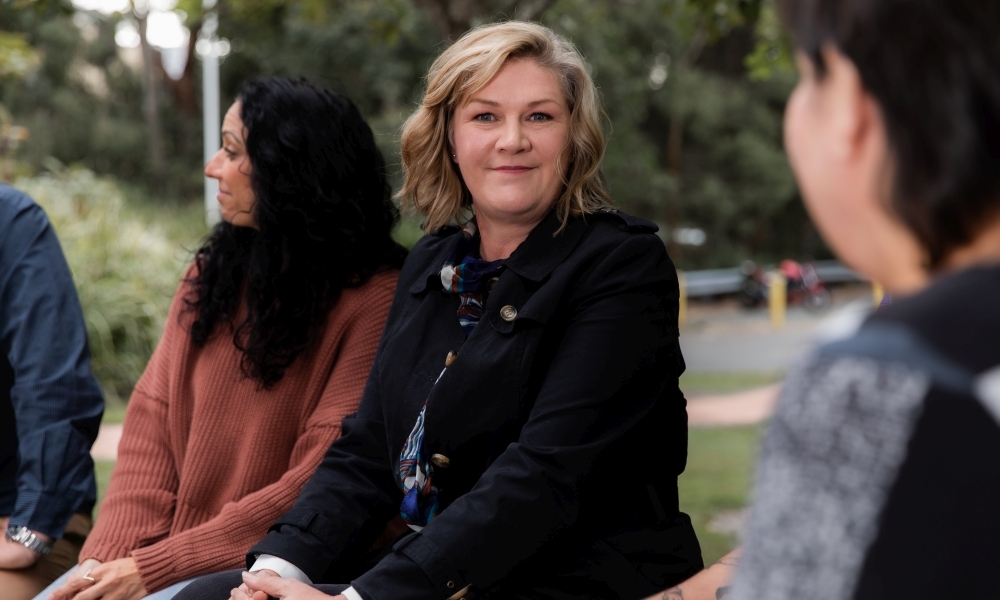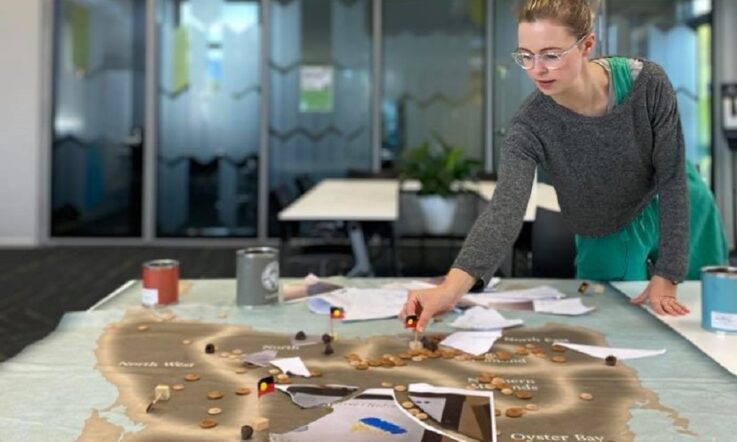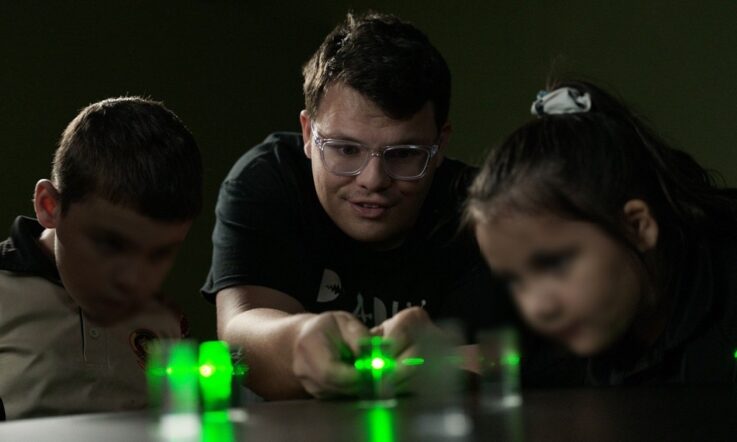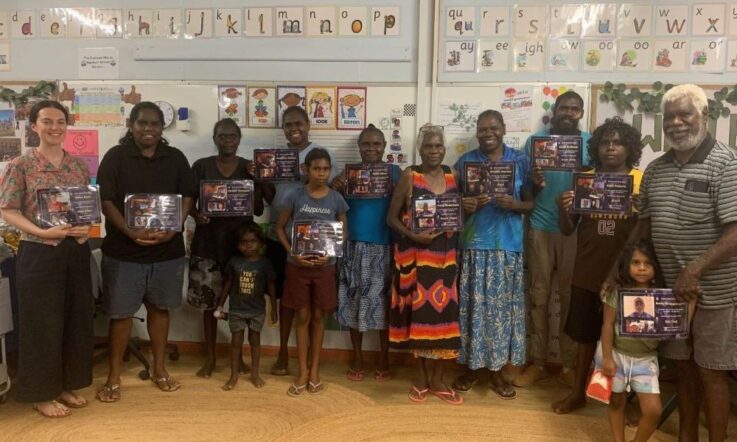I have taught in Aboriginal and Torres Strait Islander Education for the past seven years and studied Social Science (with an Indigenous education specialisation) for around 13 years. At the start of each semester, I always ask pre-service teachers what they already know about Indigenous peoples and contemporary issues.
This would give me a platform for scaffolding their learning. I was always surprised with students’ responses – ranging from stereotypes, deficit discourses to the questioning of Aboriginality and what constitutes a ‘real’ one. These misconceptions and untruths sent me on a trajectory to complete my PhD, to better understand where these student’s prior knowledge came from.
Despite the good intentions and efforts of many policy authors, education researchers, and educators, it is concerning that after almost 40 years of collaborative efforts there has been only gradual improvements in Indigenous Education. This is a problem that requires greater examination.
The participants in my research were mostly non-Indigenous, second year pre-service teachers enrolled in various education degrees (i.e. Early Years, Primary and Secondary programs). Survey questionnaires (consisting of both quantitative and qualitative data) were collected from 357 pre-service teachers commencing a compulsory Indigenous Education university course over 4 semesters. Ten interviews were then conducted to elaborate on the survey findings.
The research findings
Analysis of the survey and interview data revealed 2 distinct clusters – those who valued their formal schooling knowledge (formal cluster) and those who valued their personal experience-based knowledge (informal cluster). The formal cluster tended to be female (55%), younger (55%), had recently left school (55%), and less likely to be returning to study (33%). Responses from these students with formal knowledge will be the focus of this particular article.
Primary schooling and learned misconceptions
The recent school leavers (within the last 2 to 4 years) noted how their primary school learnings consisted of Aboriginal traditions of the ‘past’ and culture. Torres Strait Islander peoples and cultures were never mentioned. Respondents’ recollections included that they ‘learnt about their culture e.g., what they are and ways of living’. Dreaming stories and art were also mentioned with one student highlighting ‘Aboriginal culture is mostly the dreaming and oral stories’. Traditional learnings of art were highlighted by many, with many students stating, ‘we did art in primary, that is all we were taught!’ and ‘there was a focus on the artistic side of Aboriginal people i.e., dot painting’.
Similarly, traditional food and tools (hunting and gathering myths) featured strongly. A key misconception from formal prior knowledge sources was ‘understanding that Aboriginal people are different’. Others recalled cultural stereotypes such as ‘they were nomadic people, isolated communities, hunter/gatherers’. In summary, primary school knowledge mostly introduced respondents to ‘easy to accept’ stereotypical representations of Aboriginal Australians (recalling art, Dreaming stories, hunting, food, and tools etc.).
Secondary schooling and learned misconceptions
When respondents were asked to recall their secondary learnings, the majority noted how they were exposed to repetitive renditions of the drama Rabbit Proof Fence (Noyce, 2002), which shows Australian Government assimilation polices of The Stolen Generations where children were removed from their families into missions where they were trained for domestic service and labour for settlers. Many students noted how ‘we watched the Rabbit Proof Fence, but it wasn’t really elaborated on’ and how it caused division ‘they [Indigenous Australians] were so separate to us’. The majority of students noted watching this drama many times (most without teacher guidance), leading to othering and boredom.
The peaceful settler narrative was further perpetuated in teachings of ‘Captain Cook founding Australia which was classed as uninhabited’. Similarly, the extermination of the Tasmanian Aboriginal people was also recalled in learning, adhering to the myth of the last ‘real’ Aboriginal person. One student said, ‘I was taught that there were no real Tasmanian Aboriginal peoples left because they had all been killed. I was left with the impression that the Aboriginal culture was fearsome and almost barbaric’.
While some students remembered contemporary conceptions from their secondary education such as, the Mabo legal case and the Sorry Speech this was very limited. Other respondents portrayed a reflective stance, such as ‘a Year 11 elective modern history class ... was culturally insensitive’ and ‘I remember learning about Indigenous culture through workshops and guest speakers and camps etc. but in class learning was very Eurocentric’. Further, many students also noted no formal instruction at all throughout their secondary schooling.
Overall, study participants’ secondary schooling saw curriculum over-use, stereotypes, myths and positioning Aboriginal and Torres Strait Islander peoples in the ‘past’ or non-existent, with some highlighting cultural insensitivity and Eurocentrism.
What this means for professional practice
Problems with the schooling curricula and overuse of learning materials leads to positive and negative stereotyping which align with some schoolteachers’ ignorance and fear (Bishop, 2020; Lowe & Galstaun, 2020). All educators must empower students to examine and unpack their own beliefs, worldviews and values, including positions of white privilege, giving students the opportunities to ask the hard questions in a safe space (Taylor, 2020). The educator must also develop skilful questioning that develops understanding of diversity though self-reflection and critical application (Bishop & Durksen, 2020).
For example, when students are made to watch the movie Rabbit Proof Fence without further guidance and explanations from the teacher of the sociohistorical impact of racist government policies before or after it proves to be problematic. Use of this movie in the secondary curriculum could be quite a powerful resource, however, without critical reflection it reinstates the dominance of whiteness in the nation’s identity discourse and inverts Aboriginal people as the dying race and/or not having a place in a modern world (Hook, 2012). Basically, this movie could be used as an effective teaching tool to examine the motivations behind child removals, but without teacher guidance it simply becomes a ‘tick a box’ resource (Bishop, 2020).
Understanding how students construct information from their prior knowledge, both through their formal education and informal personal experience, allows classroom educators to determine the extent and type of unlearning needed before introducing new, challenging and truthful information. Educators can start with an activity to assess and measure a student’s prior knowledge, if misconceptions and untruths are found these need to be unlearned first (Taylor, 2020). Essentially, if students are left without correct teachings of Australian history and colonisations throughout their schooling, they will rely on misinformation, such as negative social media representations (Bishop, 2020).
This research also gave insights into student resistance to suggest pedagogical challenges remain in conveying the enduring effects of colonisation that lead to structural change and redress the essentialised stereotypes that continue to ‘other’ Aboriginal and Torres Strait Islander peoples (Vass & Hogarth, 2022).
All educators, in all disciplines, need to be aware of the different forms of racism at play, rather than students simply alluding to their white fragility, such as, ‘It’s my fault because I’m white’ and ‘I’m sorry’; this conformity and apologetic notion will not bring about systemic change, nor does it absolve members of society to help to redress social change (DiAngelo, 2018). The notion of colonial structural frameworks in institutions is often deflected and denied through statements of guilt (Rice et al., 2022) such as ‘well I didn’t do it’, thereby avoiding any further conversations that may include self-cross-examination or appeals for change in society, particularly at the structural level.
While difficult, it is imperative that educators deal with deflection by further helping students to understand the institutionalised nature of racism that produces the inequities that exist today and fail to allow society to move forward (Lowe & Galstaun, 2020). Therefore, it is important to recognise how institutional racism, in all its forms, manifests itself to include students’ schooling memories (Lowe & Galstaun, 2020; McKinley & Smith, 2019; Vass & Hogarth, 2022).
For transformative education to be effective, teachers need to unpack these misconceptions and untruths and educate to the structural systems that continue to oppress and segregate Aboriginal and Torres Strait Islander people/s (MacDonald & Kidman, 2022; McKinley & Smith, 2019).
References
Bishop, M. (2020). " I spoke about dreamtime-I ticked a box": Teachers say they lack confidence to teach indigenous perspectives. Science Education News, 69(2), 73-74. https://doi.10.3316/informit.587497602397498
Bishop, M., & Durksen, T.L. (2020). What are the personal attributes a teacher needs to engage Indigenous students effectively in the learning process? Re-viewing the literature. Educational Research, 62(2), 181-198. https://doi.org/10.1080/00131881.2020.1755334
DiAngelo, R. (2018). White fragility: Why it’s so hard to talk to White people about racism. Beacon Press.
Hook, G. (2012). Towards a decolonising pedagogy: Understanding Australian Indigenous studies through critical whiteness theory and film pedagogy. The Australian Journal of Indigenous Education, 41(2), 110-119. https://doi.org/10.1017/jie.2012.27
Lowe, K., & Galstaun, V. (2020). Ethical challenges: the possibility of authentic teaching encounters with indigenous cross-curriculum content? Curriculum Perspectives, 40(1), 93-98. https://doi.org/10.1007/s41297-019-00093-1
McKinley, E. A., & Smith, L. T. (2019). Towards self-determination in Indigenous education research: An introduction. Handbook of Indigenous education, 1(1), 1-15. https://doi.org/10.1007/978-981-10-3899-0
MacDonald, L., & Kidman, J. (2022). Uncanny pedagogies: teaching difficult histories at sites of colonial violence. Critical Studies in Education, 63(1), 31-46. https://doi.org/10.1080/17508487.2021.1923543
Noyce, P. (Director) (2002). Rabbit Proof Fence [Film]. Showtime Australia. https://www.sbs.com.au/movies/video/84673091819/Rabbit-Proof-Fence
Rice, C., Dion, S. D., Fowlie, H., & Breen, A. (2022). Identifying and working through settler ignorance. Critical studies in Education, 63(1), 15-30. https://doi.org/10.1080/17508487.2020.1830818
Taylor, L. K. (2020). What Does It Mean to Story Our Shared Historical Present?: The Difficult Work of Receiving Residential School Survivor Testimony as Bequest. In K.R. Llewellyn & N. Ng-A-Fook (Eds.), Oral History, Education, and Justice (pp. 132-150). Routledge.
Vass, G., & Hogarth, M. (2022). Can we keep up with the aspirations of Indigenous education? Critical Studies in Education, 63(1), 1-14. https://doi.org/10.1080/17508487.2022.2031617
Thinking about your own students, what do they already know about First Nations Australians and contemporary issues? What are the misconceptions that exist?
How do you go about unpacking these in the classroom? How do you create a safe space for students to ask hard questions and discuss these topics?



